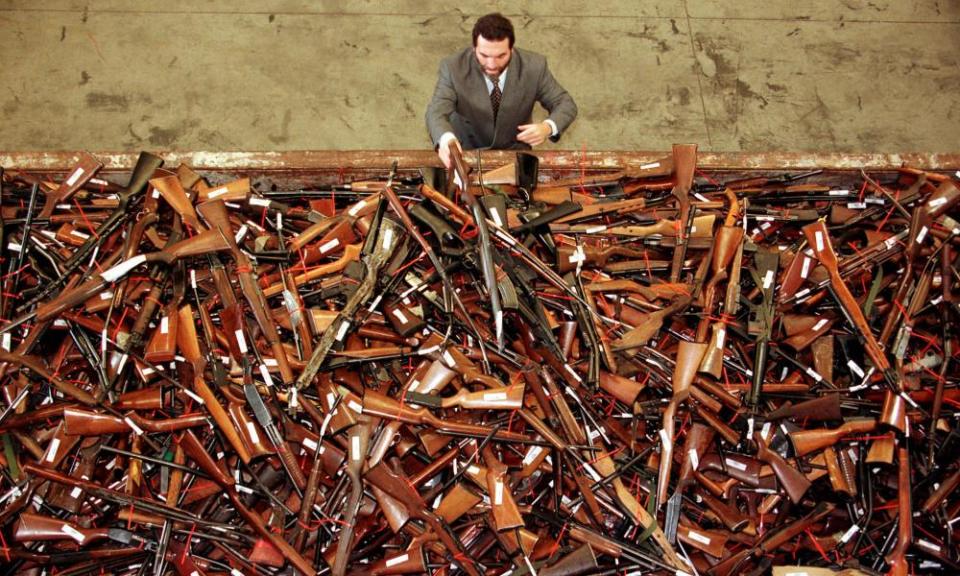Strict firearm laws reduce gun deaths: here’s the evidence

Following the Christchurch shooting, in which 50 people were killed, New Zealand’s government has announced it will be reforming the country’s gun laws.
According to the GunPolicy.org website maintained by the University of Sydney, New Zealand currently has gun laws that are more restrictive in comparison to some countries but more permissive than others, such as Australia’s.
People must have a licence to own guns, and the licence requires background checks. While dealers must keep a record of the guns they sell, most guns are not required to be tracked in a central register to monitor changes in ownership due to private sales.
New Zealand law also permits ownership of semi-automatic rifles, such as the AR 15-style gun, used previously in US mass shootings. These rifles are able to be bought under a category A licence, but the licence only covers magazines that hold seven cartridges. While it has been confirmed that the Christchurch shooter legally obtained at least four guns, included two semi-automatic rifles, the shooter also reportedly used larger magazines capable of holding more ammunition.
In a press conference on Monday, New Zealand’s prime minister, Jacinda Ardern, made specific reference to Australia’s implementation of stricter gun laws following the Port Arthur massacre in Tasmania in 1996, in which 35 people were killed and 23 were wounded.
So, what happened with Australia’s laws, and how has gun control worked in other countries?
The Australian situation
Following the Port Arthur incident, Australia implemented the National Firearms Agreement (NFA).

Prohibited firearms that were handed in under the Australian government’s buy-back scheme after the Port Arthur massacre.Photograph: David Gray/Reuters
New, uniform state gun laws banned rapid-fire guns from civilian ownership except under certain, restricted licences, and established a government buyback of semi-automatic and pump-action rifles and shotguns.
Another requirement was that all guns must be individually registered, with all gun sales tracked to record changes in ownership. Previously, registration varied by state and gun type. The laws reduced guns in Australia by about one-fifth, with more than 700,000 guns removed and destroyed.
There have been a number of studies published on the impact of the NFA on firearm-related deaths in Australia. According to a 2011 summary of the research by the Harvard Injury Control Research Centre, a number of studies suggested beneficial effects from the law changes, with a reduction in mass shootings, and a reduction in the rate of firearm-related deaths (both homicides and suicides) overall.
Researchers from the University of Sydney and Macquarie University in 2006, 2016 and 2018 looked at the number of mass killings before and after the NFA, and also whether the law changes affected the number of firearm-related deaths. They found that there was a drop in the rate of firearm deaths – particularly with suicides – but were cautious about attributing this to the NFA with the methods they used.
Their research also showed that while there had been 13 mass shootings (using the definition of five or more people killed) in the 18 years before the law changes, there had been none in the 22 years following (though there was one mass shooting involving seven members of one family at Margaret River in Western Australia in May 2018).
Modelling suggested that if shootings had continued at a similar rate as that prior to the NFA, then approximately 16 incidents would have been expected by February 2018.
Firearm-related deaths in Australia
Another approach was taken by researchers from the Australian National University and Wilfrid Lauer University. In this study, the researchers used state-based differences in gun buybacks and showed “the largest falls in firearm deaths occurred in states where more firearms were bought back”.
While two studies found either no reduction in firearm deaths before and after the NFA, or a reduction only in firearm-related suicides, but not overall suicides, the methods for both of these studies were subsequently criticised by other researchers.
Gun control in other countries
A landmark, comprehensive review of studies looking at the effectiveness of gun control laws in 10 countries was published in 2016. Researchers at Columbia University reviewed 130 studies to compile an overall picture of how effective laws limiting firearms were in reducing deaths.
The authors concluded “the simultaneous implementation of laws targeting multiple elements of firearms regulations reduced firearm-related deaths in certain countries”, and “some specific restrictions on purchase, access, and use of firearms are associated with reductions in firearm deaths”.
More recently, further studies on gun control in the US have been released that show stricter laws by US state, and states nearby, are associated with reduced suicide and homicide rates.
● You can read more about New Zealand’s history with gun control here. Many thanks to German Lopez for this article at Vox, which is where I first saw several of the papers I’ve mentioned.
• Crisis support services can be reached 24 hours a day. In New Zealand, the crisis support service Lifeline can be reached on 0800 543 354. In Australia, Lifeline is 13 11 14. In the UK and Irish Republic, contact Samaritans on 116 123. In the US, the National Suicide Prevention Lifeline is 1-800-273-8255. Other international helplines can be found at www.befrienders.org.

 Yahoo News
Yahoo News 
